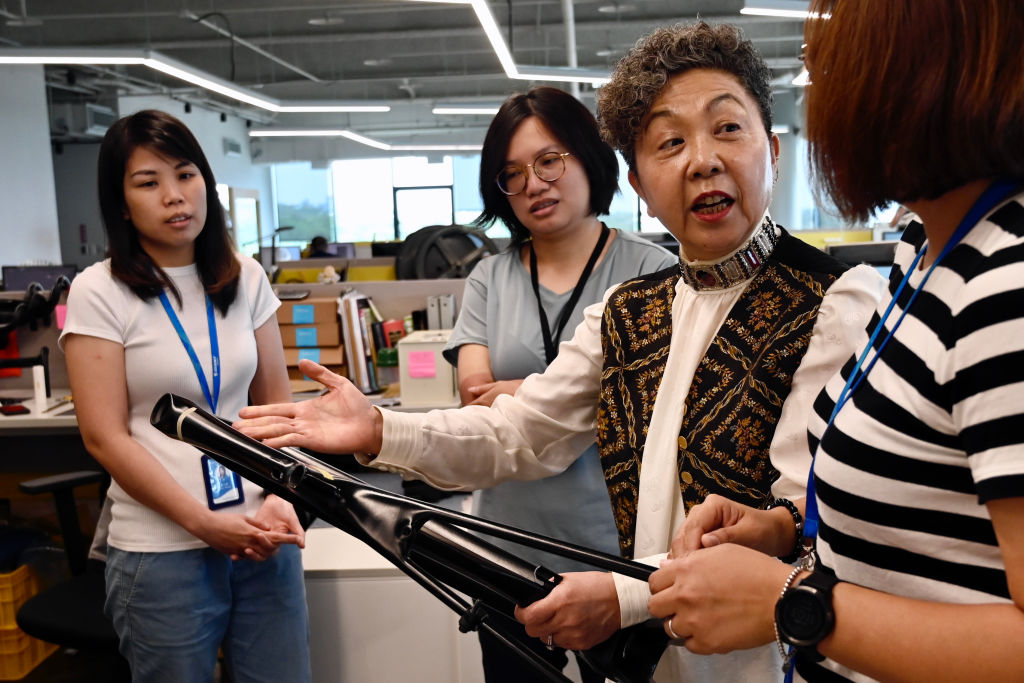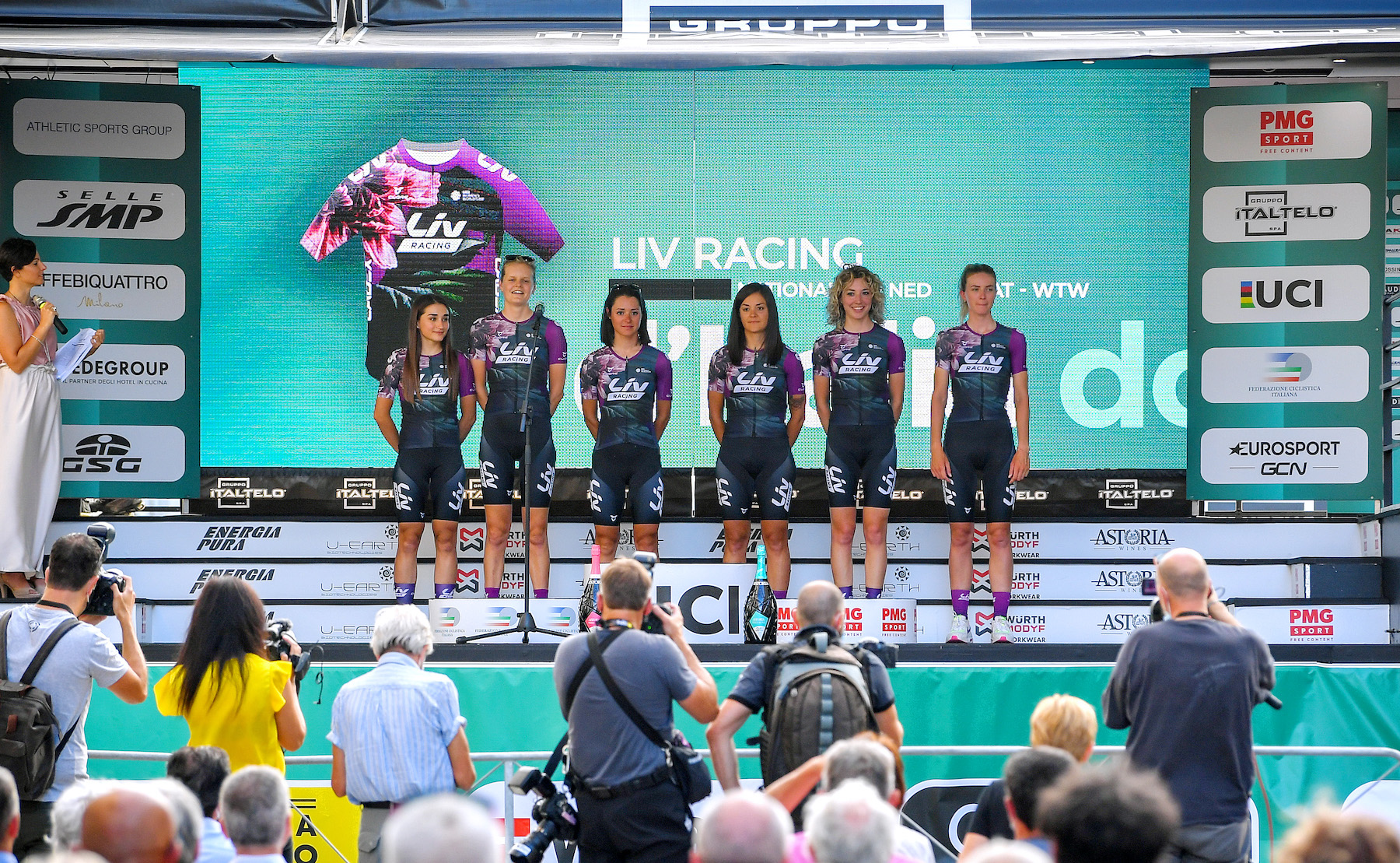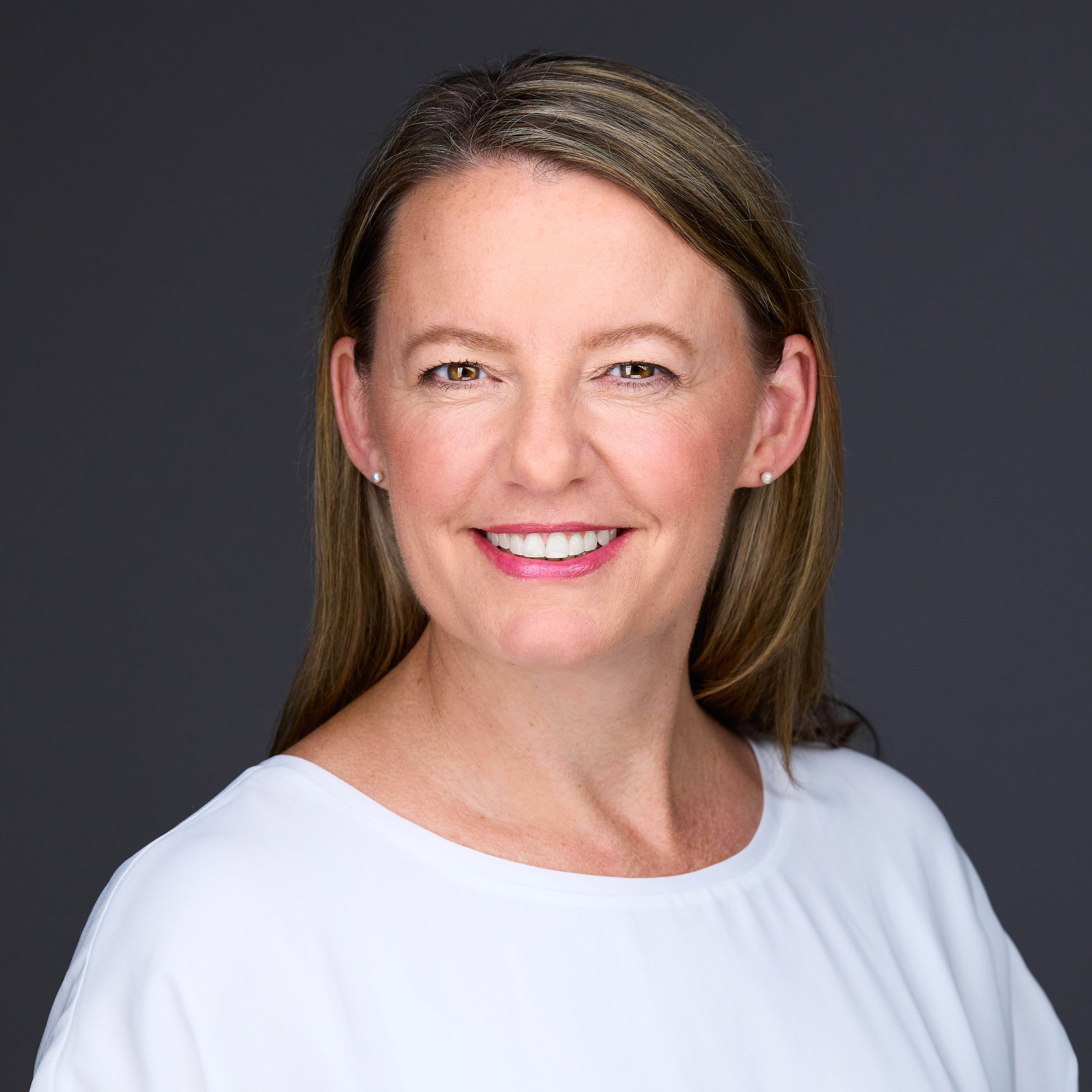Power, influence, inspiration: Bonnie Tu
'I want to inspire women to take up cycling as a sport and a lifestyle, to lead a healthier and more confident way of life'

Bonnie Tu needs no introduction. She is one of the most powerful, influential and inspirational people in cycling and she places a high value on pioneering female leaders in the sport and wider cycling industry.
Tu is the chairperson of the Giant Bicycle Group - under which the brands Giant, Liv, Momentum, and CADEX operate - and founder of Liv Cycling. She is also the driving force behind the brand’s women-specific cycling gear that maintains a mission to create cycling products for women, by women and with women.
In an interview with Cyclingnews, Tu speaks about the joy cycling has brought to her life, empowering women to become leaders, and inspiring the next generation.
Cyclingnews: Thank you for sharing your time with us. Could you tell us about your experiences that led you to the world of cycling?
Bonnie Tu: I was born in the west coast Taiwan. I learned how to ride a bike at 10 years old, with help from my father, but I didn’t have the chance to own a bike until I was in junior high school. My school was far from my home, and so I needed to ride about 10 kilometres a day. It was challenging but I got used to it. At that time, to own a bicycle and ride that far was quite amazing, especially around the girls. I always enjoyed my time riding to and from school, and at that moment, I felt a sense of freedom. I enjoyed the sunsets in the afternoon that accompanied me home.
I didn’t have an opportunity to ride in my senior high school or university years. Since I graduated from university, I drove a car and picked up golfing, and these took me away from cycling.
I spent more than 30 years in golf, and when I was 57 years old, for the first time, I had an opportunity to ride a bike again. At that time, the chairman [of Giant] went on a tour around Taiwan at the age of 73. Cycling was not popular at all at that time, but I decided that I wanted to join him for an 80-kilometre section of the tour. I didn’t have a bike or apparel, and I had to rush to a bike shop to buy clothing and borrow a bike. Nothing fit me at that time. I didn’t know how to use the derailleur, so for my first long riding trip, I used a single speed, simply because I didn’t know how to change gears.
Get The Leadout Newsletter
The latest race content, interviews, features, reviews and expert buying guides, direct to your inbox!
The ride was in May of 2007, the day before Mother’s Day. After the ride, I rushed home to celebrate with my mother, so I aways remember that day. I had been in golf because it was family-oriented and my mother was a very good golfer and sponsored many famous professional golfers in Taiwan. So, I have been used to the sponsorship of athletes in my life, because of my mother.
CN: You worked for Giant at that time. Could you tell us about your role there before launching Liv Cycling?
BT: I was one of the original founders of Giant, and since then I sit on the board. In 1991, after starting a family, I re-joined the company. In 1993, because of the company's requirement, I jumped into the role of being in charge of finances. By 1994, I was promoted to become the chief financial officer of the company, along with overseeing the legal and IT responsibilities, and these sorts of things.
I didn’t start riding a bike again until 2007, and at that time, my children were also still quite small and my husband worked in China. I had a distance marriage, my two boys, my parents, and my company, and a lot of these pressures were on me. Cycling made me feel happy and free. I had a lot of work pressure, so it was a very good way to release that pressure.
CN: Is this feeling of happiness and freedom an inspiration behind your continued work in facilitating female leadership in the cycling industry?
BT: Of course, because once I started cycling, I found that it was also great for women. It helps to boost confidence. When we women grow up, we are always told to obey our parents’ advice and to carry on the family responsibilities, take care of our brothers and sisters. I found out that women, especially in Taiwan, do not have their own identity. Cycling helps women to boost their confidence. A sport helps people to boost their ego because, in many sports, you need to be good at a sport like basketball, volleyball or golf.
Cycling, however, is a sport where as long as you ride you can be good and it does not make you feel awkward. It’s a unique sport and I find it very good for women. It’s a sport you can do alone or with friends or meet new people, and it builds a community - it’s one of the best sports for women.
In society, we have always been considered as the second gender, or not as good as men. For me, and at Giant, we promote and tell girls and women that they are as good as, and not secondary, to men. I always tell the women who work at our company that they are already overqualified for their jobs, and encourage them to go for it, challenge themselves, and that they are entitled to anything.
CN: What led to the launch Liv Cycling?
BT: Sometimes male colleagues think that women don’t know about bicycles, or they try to make decisions for women, based on the equipment they either design or carry, and that's not fair. I emphasise that what is seen from a male’s eyes does not meet the female requirements because we are the ones who ride the bikes and wear the apparel, and we know what we want. These decisions cannot be made for us. This is why Liv designs for women only.
CN: Is it important for you to see more women in decision-making roles at the highest level in cycling?
BT: I believe women should have the equal right to power and decision-making if we are qualified and we can do it. If you have the ability, go for it, and in Giant, we have many females on the senior positions, the highest level of female senior positions among the industry, at more than 30 per cent. Also, Liv does not just sponsor females but we are very inclusive and want to bring all background and disciplines into cycling. I want all women to feel entitled to enjoy this sport.
I always think that if I can inspire younger generations, and I can support women, that is the best thing that I can do. It is also the most meaningful to me. I am reaching the end of my career and if I can encourage more talented women, and men as well, to pursue what they really like to do and what they are good at, make them shine in this industry, that is extremely important to me.
CN: What sort of legacy would you like to leave behind once you decide to retire?
BT: I would like people to understand that before me, women in cycling community was less than 10 per cent, and I want to inspire women to take up cycling as a sport and a lifestyle, to lead a healthier and more confident way of life. I want people to remember me by my contribution to build up this trend, and that I am the pioneer.
CN: When you first started Liv Cycling were you confident that it would be a success?
BT: When we started in 2008 we chose to set up the first shop in Taipei because the women really embraced our project. It was totally to my surprise. We shared it with Giant USA, and to my surprise again, the US general manager, shared the female market as the new promise land and many dealers took it seriously.
CN: Is it important to continue to design women’s-specific cycling products?
BT: Of course, we are entitled to it. When you ride a bike, you require a fitting, and a bike that doesn’t fit properly is so painful to ride. At the fitting, why do you need to change this or that in order to just ride to perform better and to feel comfortable. Of course, we need a bicycle company to design a bike to meet our needs. Why would we compromise. I know that it can be a burden for many bicycle companies because if you design a women’s-specific bike, you need a product manager that is especially focused on women’s only products.
Maybe you also need a team of engineers just to create the structures for the product managers, and maybe factories require more or different molds, and at the beginning do not have the economies of scale to have enough quantity to support the production.
The factory might say, how come with just one more mold, you produce so little quantity. It can be a deterrent for a factory and for the dealers. If you need a small, previously the only required one male size or they would call it a unisex size, now they have two, and so many SKUs [stock keeping unit] extra, and some don't like to pay this fee.
CN: What has been the biggest improvement or game-changer in women’s specific products?
BT: My opinion is that the bike itself. We designed a bike, not only the geometry, it is also asking what muscle, for females, are more comfortable when riding, so we design a frame that encourages you to use that muscle more freely. You can perform better. When you are on the Liv frame you feel different from a men’s frame.
Of course, by competitors will say their own theories, but this is what I strongly believe. I consult with doctors who tell me men and women are built completely differently. I asked because I am the Liv founder, and I have [bias], and so I've consulted with my doctor, and he said that I am right, men and women are built differently and we are entitled to have a different [products].
Even in golf we have female golf sets, so why not bikes, why do we have to settle for a men’s bike? When they say it’s unisex, then I say, 'please, then use women’s geometry and the things that make females comfortable, and then set that as a standard [for unisex bikes] and then men can change the their handlebar offset or whatever they require'.

CN: Women’s cycling has undergone reforms and Liv is committed three additional years to its Women’s WorldTeam Liv Racing. What are your thoughts about this progress, especially the live broadcasting requirements?
BT: You are one of the pioneers who cover women’s professional racing. If we look at golf, what is the popular golf broadcasting? It’s the female golf competition, not the men anymore, because the women’s games are more fun and women tend to make mistakes and recovery very well.
This history will also repeat in cycling. Now, perhaps some people say women’s professional cycling is not important, but eventually, it will be the females professional racing that helps the cycling industry. Just look at golf as the example which can tell you the story, it’s the proof.
If we are talking about ROI [return on investment], the immediate return is low, but it is building a sort of counter [foundation] and a trend that will help increase returns in the long run.
It’s still a very tough career for females. They are willing to sacrifice and I know the professionals selections are really tough and I appreciate that we have so many pioneers who spend their youth age to create this trend. I appreciate that devotion. With their commitment and support we will have a new era coming and it will encourage the younger women to take cycling seriously.
CN: Grassroots cycling, commuting, and recreation has a much broader market. Is it important to cultivate that base?
BT: Grassroots are always important. In Taiwan, we sponsor and organize a lot of races on our own and I know my fellow female cyclists enjoy it and they will come alone and also with groups, young family members, and it helps build the new bread of cyclists. If we have a bigger cyclist population, we will be able to find new talent.
CN: What do you say to those who think that there is a limited market for interest with women’s cycling?
BT: That is a very ignorant view and they simply don’t know what they are talking about. If I compare quantities, in the English-speaking countries, the percentage of quantity is almost half; if Giant is 100 than Liv Cycling is almost half of that, and upwards of 40 per cent, and with e-bikes it is even bigger. In Europe and Asia these numbers are lower, but in English-speaking countries it’s almost half.
It might be more profitable if we did one brand only, but there is a commitment to create a new world and a new future in cycling, as a company, Giant Group, we want to commit to it. We've been committed since 2008, when we decided to launch the Liv Cycling brand, we wanted to bring in more women, we are entitled, we are half of the population. In the future, Liv Cycling's quantity should be the same as Giant.

Kirsten Frattini is the Deputy Editor of Cyclingnews, overseeing the global racing content plan.
Kirsten has a background in Kinesiology and Health Science. She has been involved in cycling from the community and grassroots level to professional cycling's biggest races, reporting on the WorldTour, Spring Classics, Tours de France, World Championships and Olympic Games.
She began her sports journalism career with Cyclingnews as a North American Correspondent in 2006. In 2018, Kirsten became Women's Editor – overseeing the content strategy, race coverage and growth of women's professional cycling – before becoming Deputy Editor in 2023.